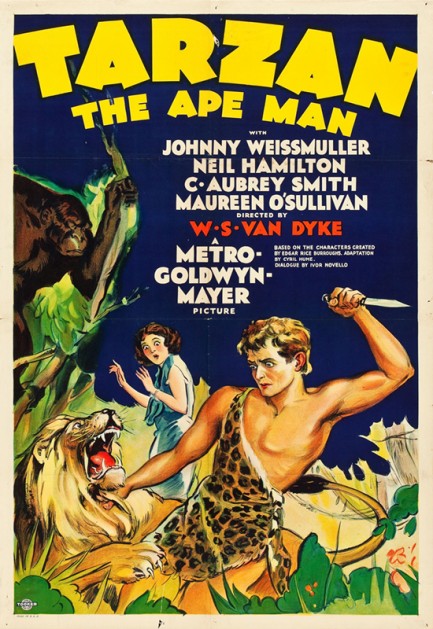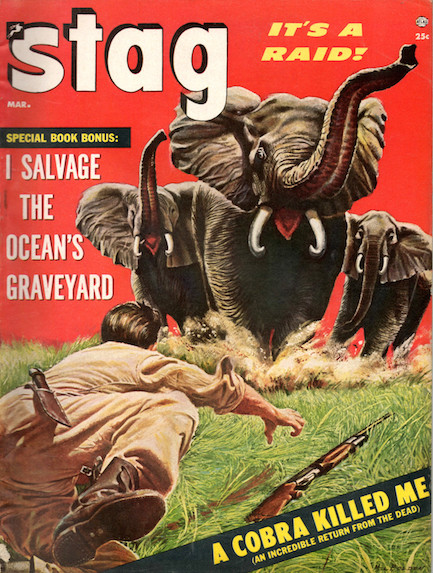 There, isn't that better? You'll save a few cents on your electricity bill. 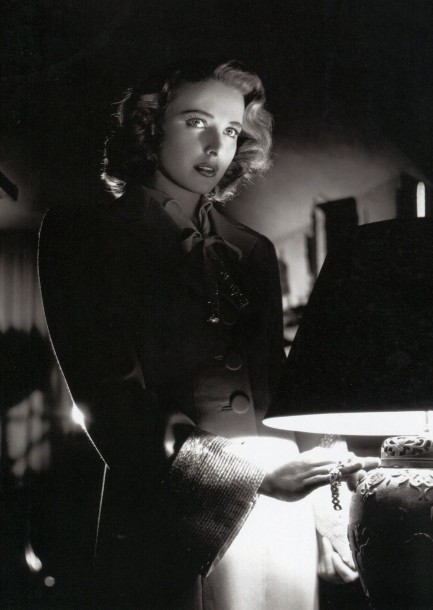
It's never a bad idea to save money on your utilities, as U.S. actress Laraine Day demonstrates above. Day had a long and busy career, appearing in films such as The Woman on Pier 13, Foreign Correspondent, Tarzan Finds a Son!, Fingers at the Window, and The Locket, for which the above promo was made. It dates from 1946, and you can see another photo from the film here.
 Her Majesty the Queen of the Jungle is unavailable—she's gone hunting today. 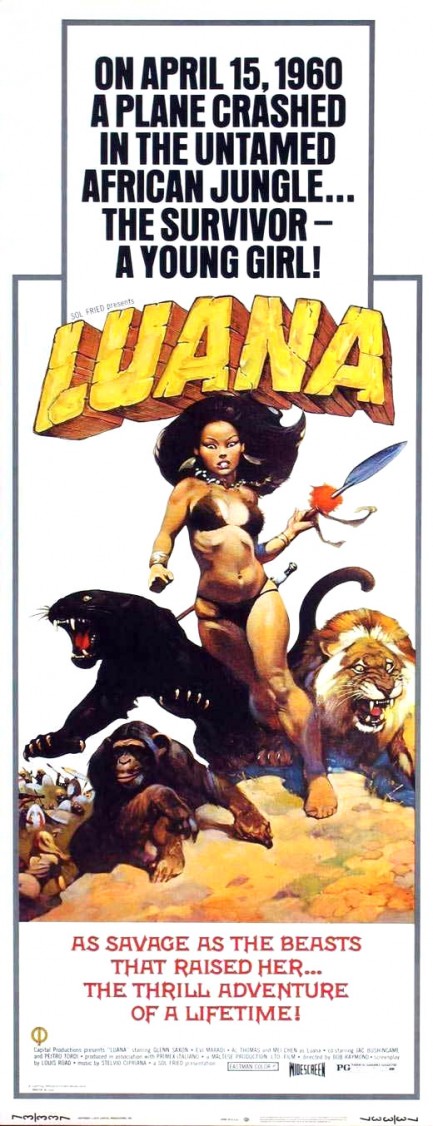
Several years ago we talked about the lost world adventure Luana la figlia delle foresta vergine and showed you its Italian poster. Today we're showing you the much cooler U.S. promo, which was painted by Frank Frazetta, one of the kings of fantasy art. His work was used for numerous promos, but this is one of our favorites. It wasn't made specifically for the movie. It was adapted from one of his many earlier pieces, below. You can see a little more Frazetta here, as well as here, where we talked about the novelization of the movie.
 As furniture goes they're all upside, no down. 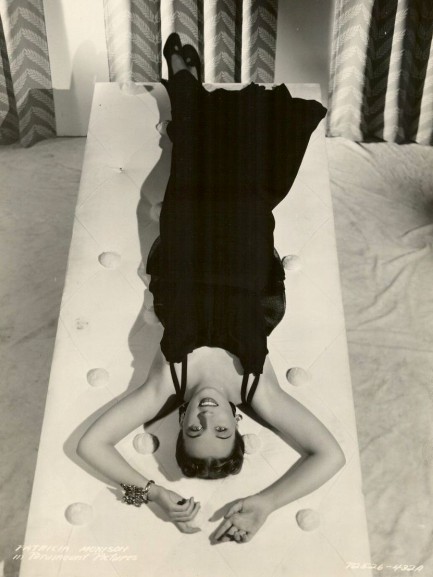
Can furniture change your life? Maybe. This photo caught our eye because we too have a divan, and it's so very useful. One can lounge, read, nap, emphasize points while seated on its edge, get freaky, whatever. U.S. actress Patricia Morrison—performer in such films as Song of the Thin Man, Dressed To Kill, and Tarzan and the Huntress—seems to have discerned the utility of the classic backless divan in this unusual reverse oriented promo photo. It's... divine. We don't have a date on it, but it's probably from around 1945.
 MGM's fantasy version of Africa goes swinging into northern Europe. 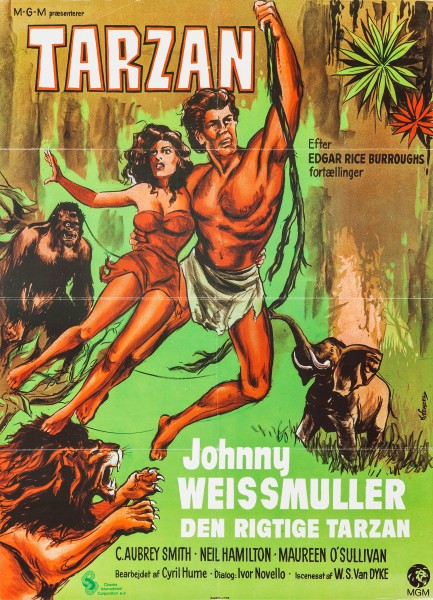
From up Scandinavia way comes this colorful borderless Danish poster for Tarzan the Ape Man, which starred Johnny Weissmuller and Maureen O'Sullivan. It was called simply Tarzan in Denmark, though Danes who've since seen it on DVD know it as Abemanden Tarzan. This was painted by Kurt Wenzel, whose signature you can see at the righthand margin, and who also painted well known posters for The Flying Tigers, The Killers, and The Searchers. We saw Tarzan for the first time last year and enjoyed it despite its flaws. We enjoyed the sequel too, equally flawed. Shorter version: watch it only with your historical accuracy and outrage filters turned off. After opening in the U.S. in March 1932, Tarzan premiered in Denmark today the same year.
 I was never an ugly duckling. That's why you shouldn't believe fairy tales. 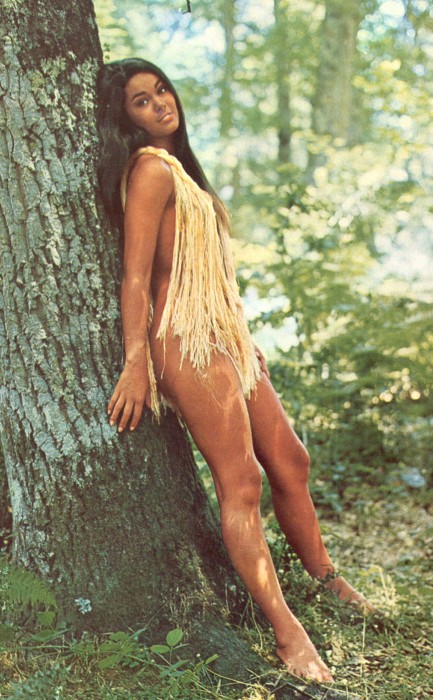
This photo of Swedish actress Kirsten Svanholm, better known by her pseudonym Kitty Swan, was made when she was filming the Tarzan-style adventure Gungala la pantera nuda, aka Gungala the Black Panther Girl in 1968, the second of two Gungala movies she headlined. After those films she appeared in a couple of official Tarzan movies, 1969's Tarzán en la gruta del oro, aka Tarzan in the Golden Grotto, and 1972's Tarzán y el arco iris, aka Tarzan and the Brown Prince, so you could say she ended up typecast. But what a type. We watched one of the Gungala films and it was ridiculous. Will that stop us from watching the other one? Not on your life.
 They may not have much but at least they're free. 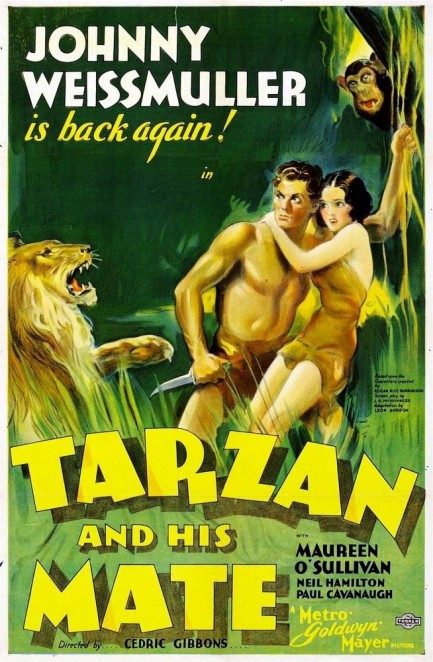
Like the poster says, Johnny Weissmuller is back again. When we last saw him as Tarzan, earlier this month, he and love interest Maureen O'Sullivan had swung away into the African trees together. But her British friends were always going to return, and sure enough Neil Hamilton and company are back to get their mitts on that legendary cache of elephant ivory. You know the drill. Hamilton and Paul Cavanaugh seek the unobtanium. The jungle comes alive with lethal dangers. Bearers sacrifice their lives to keep the bosses safe. Meanwhile Tarzan and Jane deal with their own cavalcade of jungle horrors—first a lion, then a rhino, then a leopard, then a crocodile, then a lion. We don't have to detail it. What's fascinating is not the action, but the erotic subtext.
This flick oozes sex. O'Sullivan's role has evolved. She's no plain Jane. She's a fantasy of the perfect woman here, the perfect lover. Her character is—in a word—devastating. Her humor, cuteness, and coquettishness are off the charts. She wears less than ever. Her body double Josephine McKim wears nothing, or at most a patch over her pubic area. But audiences who saw the full cut thought it was a bare-assed O'Sullivan. All of this is designed to make her irresistible not only to the male audience, but to Cavanaugh, who goes after her with the charmless persistence of a high school sophomore. Dare we say this is a dangerous game when dealing with the King of the Jungle?
Of course, all the flaws we cited with Tarzan the Ape Man are recurrent here. Once again African bearers are whipped through the jungle, across dangerous rivers, and up that same deadly escarpment from installment one. At which point Cavanaugh says, “Well, I hope we've got the worst behind us.” No, not even. Tarzan and His Mate is not a good look, and what it stylizes—not big men in a big land, but the rape of Africa—is uglier still. But it's up to each viewer to decide whether to watch it, and if so, whether to decide it's simply entertainment, or to compartmentalize its implications, or maybe to use it as a launching point for further thought and discussion. Tarzan and His Mate premiered in the U.S. today in 1934.
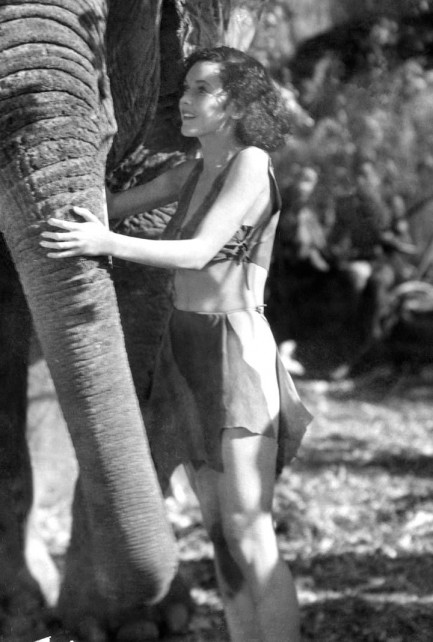 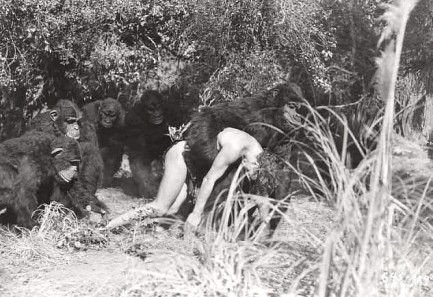 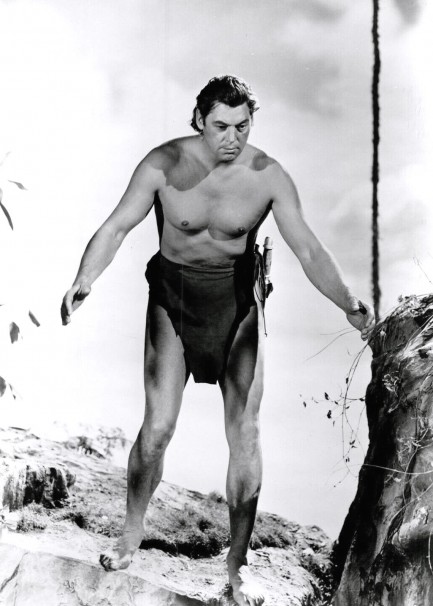 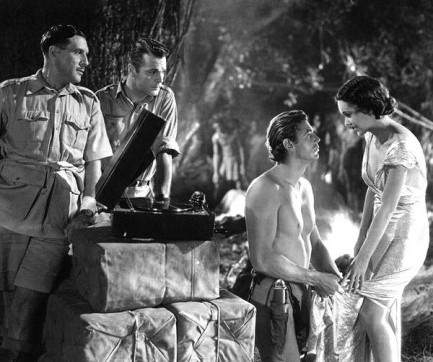 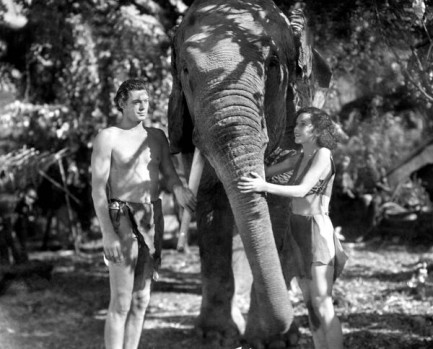 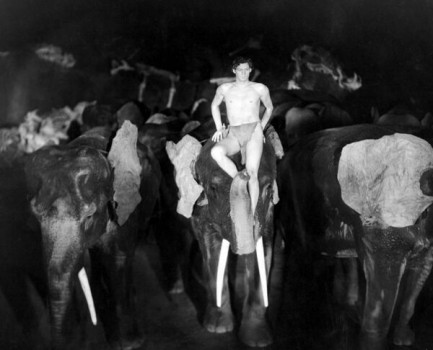 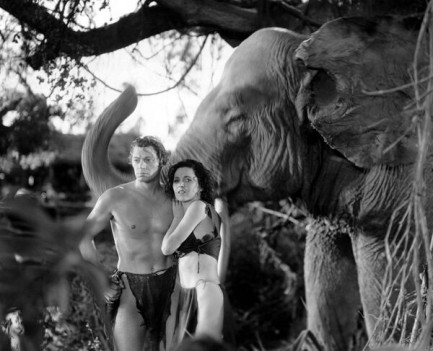 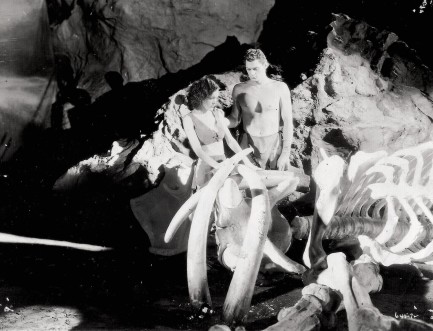 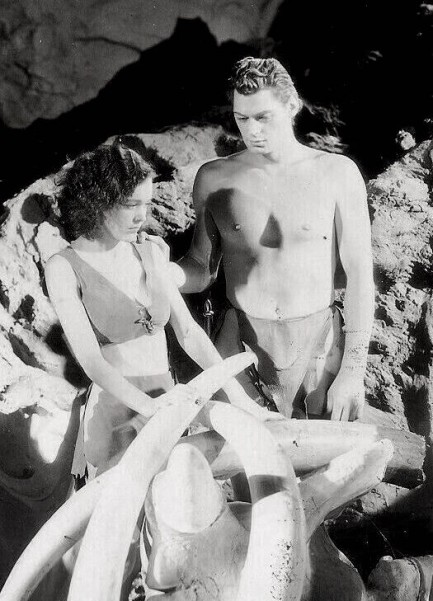 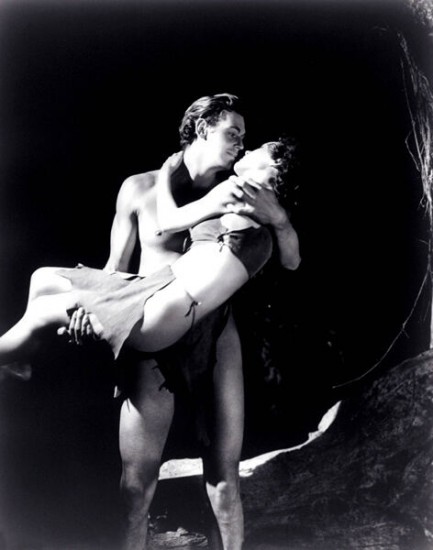 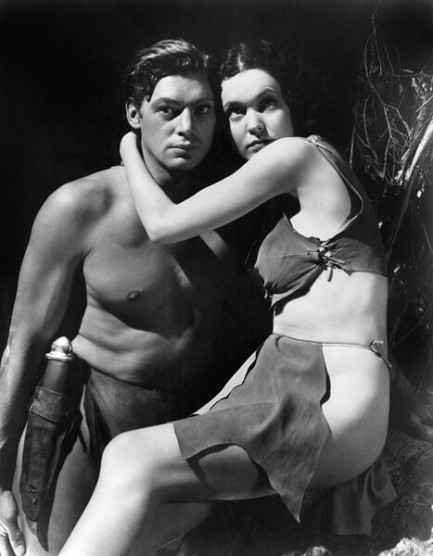 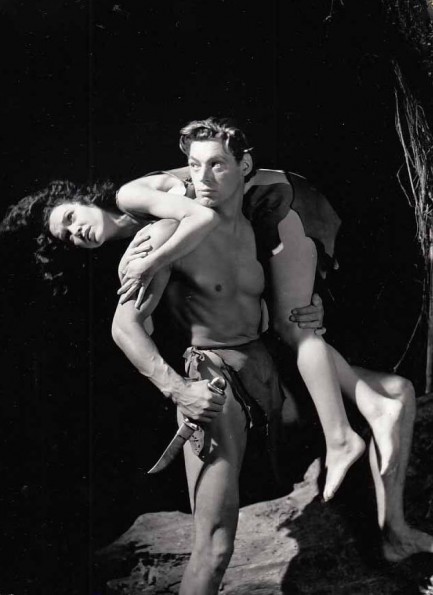 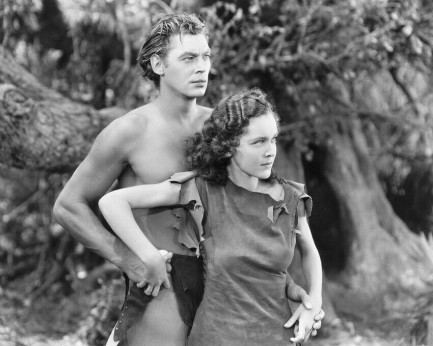 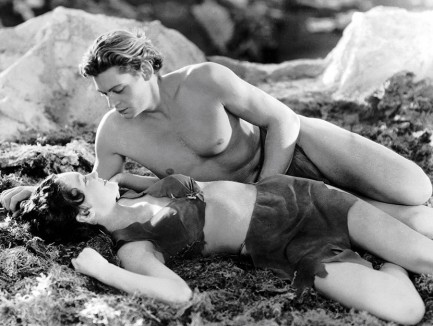 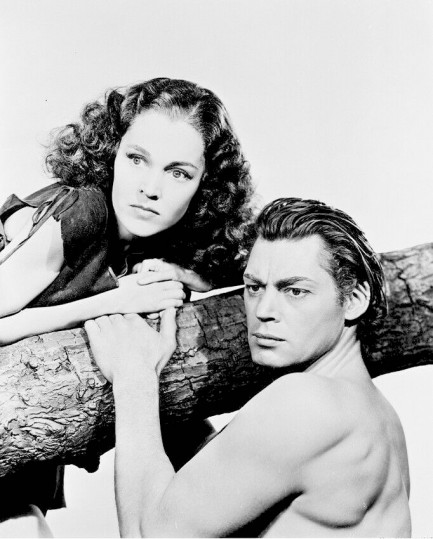 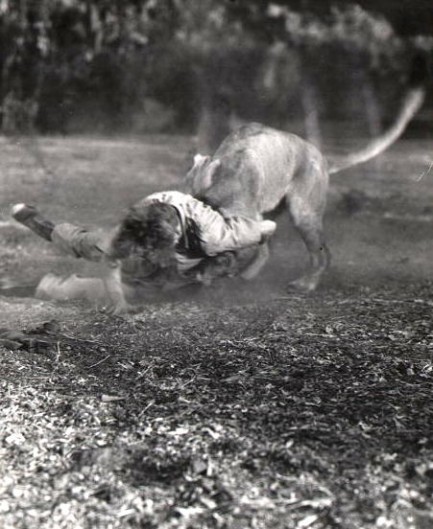 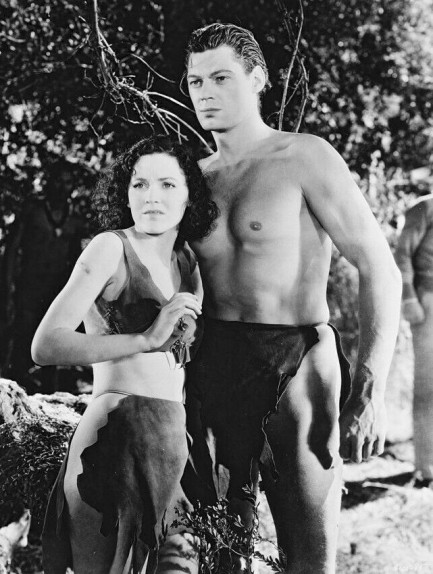 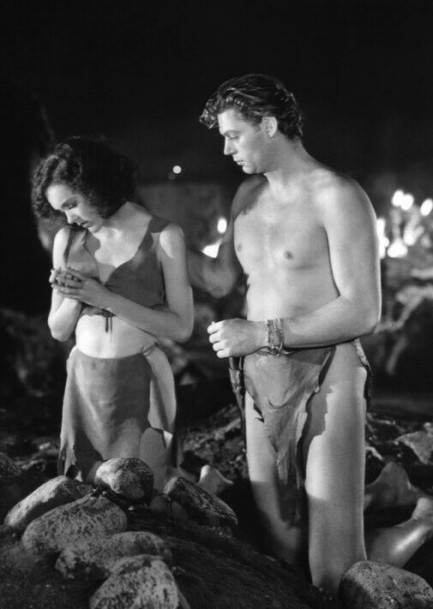 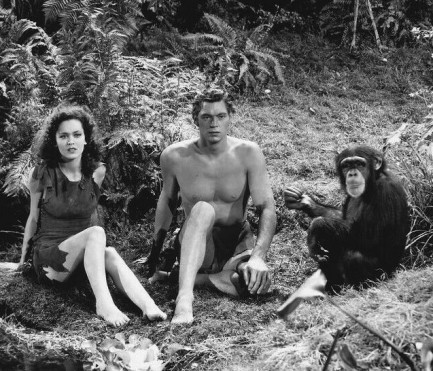 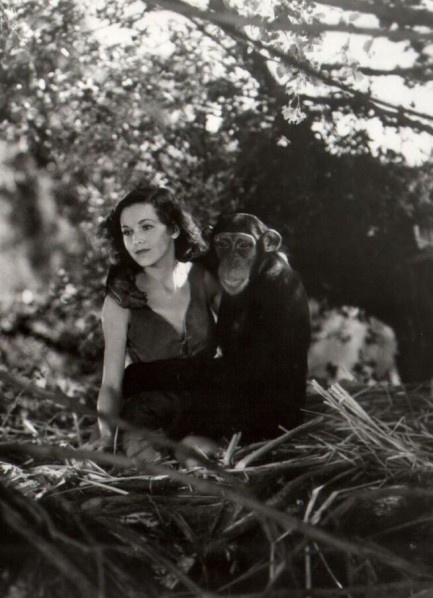
 Weissmuller's jungle classic continues to look weirder as time goes by. 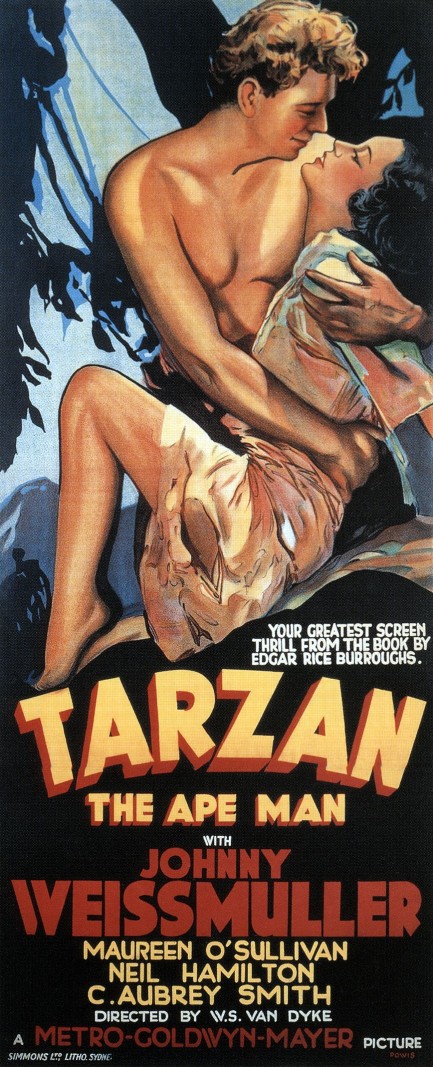
Above is a beautiful poster for Tarzan the Ape Man, which starred Olympic swimmer Johnny Weissmuller as Tarzan and twenty-one year old Maureen O'Sullivan as Jane Parker. The plot here is simple. White explorers are desperate to find a million pounds of ivory they believe lies hidden in an elephant graveyard somewhere in the African interior. After scaling a massive escarpment (and losing a native bearer over the side), and traversing a river (and losing native bearers to rubber hippos and crocs), and stumbling across a tribe of dwarfs (and losing a native bearer to an arrow), they finally reach the right area—and promptly lose Jane to Tarzan. Although he's carried her away against her will, she and Sir Loincloth eventually establish a rapport. And no wonder—this particular Tarzan is handsome, has good hair, and a physique in top maintenance.
Tarzan the Ape Man was made way back in 1932, but it isn't the first Tarzan film, or even the fifth or the eighth. But this effort from MGM, with its somewhat detailed sets, scanty costuming, and numerous animal co-stars, was the first that was a big hit. The shooting took place in various locations around Southern California and Florida, although there is some legit African stock footage used in spots, and, according to some sources, some second unit stuff from Mexico. For the era it must have been pretty convincing, rubber hippos and all. 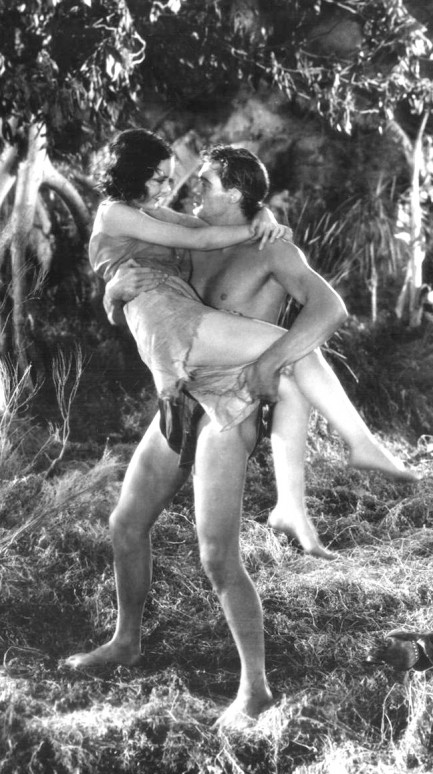 Needless to say, this flick is not flattering to Africans, African Americans, or African anyones. As for what the little person community thinks about fifty of their number covered in shoe polish, you'd have to ask a little person. We don't know any. But we seriously doubt they like it. Needless to say, this flick is not flattering to Africans, African Americans, or African anyones. As for what the little person community thinks about fifty of their number covered in shoe polish, you'd have to ask a little person. We don't know any. But we seriously doubt they like it.
As we are all part of the same human family, we all should feel empathy as we would if a brother or beloved cousin were insulted. Seems to us we've made halting progress on that front. What hasn't progressed at all is agreement about how to deal with literally trillions of dollars of stolen labor, goods, economic potential, and lives. If no recompense is to be offered, then at least we should be able to talk honestly about what happened. German Foreign Minister Heiko Maas recently admitted that his country's possession of some of the priceless Benin Bronzes amounted to harboring stolen goods. The U.S. and Britain, meanwhile, refuse even to entertain conversations about their share of these looted pieces. It's the same with people: some admit to crimes of the past, while others say there were no crimes, and even if there were, they don't matter anymore.
Tarzan the Ape Man presents a fictionalized version of the real-world history of capitalists strip-mining Africa. Without an iota of reflection, the characters here plan to steal local wealth, described by head bwana C. Aubrey Smith as, “Enough ivory for the entire world.” But what he really means is, “Enough ivory for the entire world to buy from me.” Of course, colonials didn't think they were looters. But then, colonials wrote the rules. So Tarzan the Ape Man scratches the surface of a contentious history, but here's the thing: it's still just a movie, and it's possible to watch it, be aware of what it portrays, yet have a laugh. It's a 100-minute over-the-top burlesque of historical wrongs, from colonialism to segregation in moviemaking. To enshrine so many bad practices in one film is a hell of a feat. Yet within its narrative universe it's still very entertaining. Is that a paradox? Maybe. But that's art for you. Tarzan the Ape Man premiered in the U.S. today in 1932.
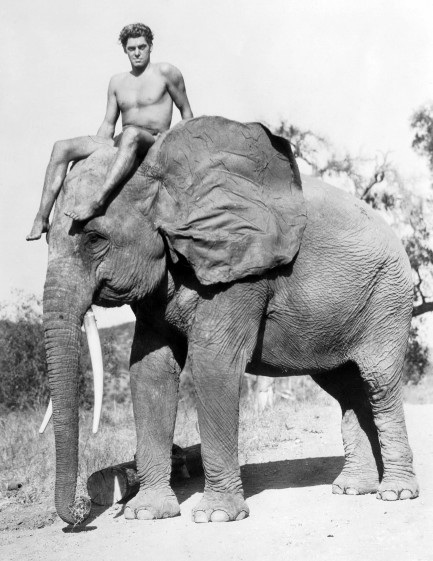 Pick man up. Put man down. Pick man up. Let man sit on my head. I'm about to stomp this fool. Pick man up. Put man down. Pick man up. Let man sit on my head. I'm about to stomp this fool.
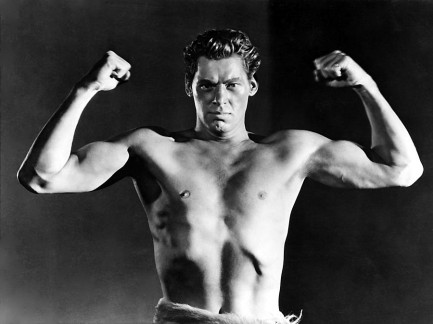 Tarzan invent shaving armpits. Tarzan smooth like eel. Tarzan invent shaving armpits. Tarzan smooth like eel.
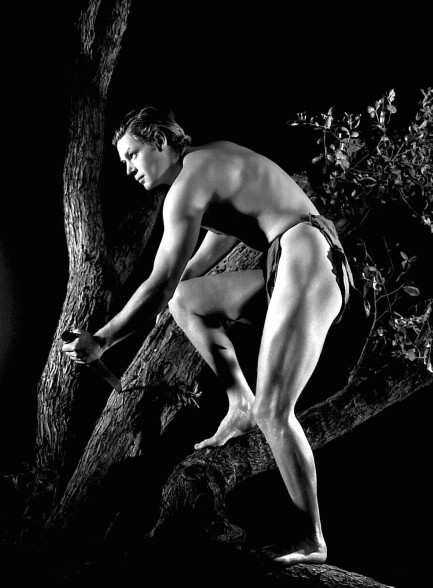 Great pose, Johnny! Just great. And your nuts didn't fall out this time. Excellent! Great pose, Johnny! Just great. And your nuts didn't fall out this time. Excellent!
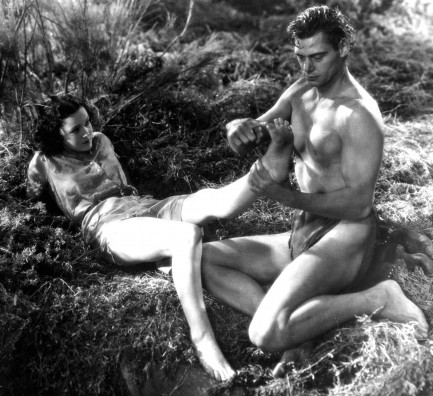 Jane feet funky. Also, Jane need pedicure. Jane feet funky. Also, Jane need pedicure.
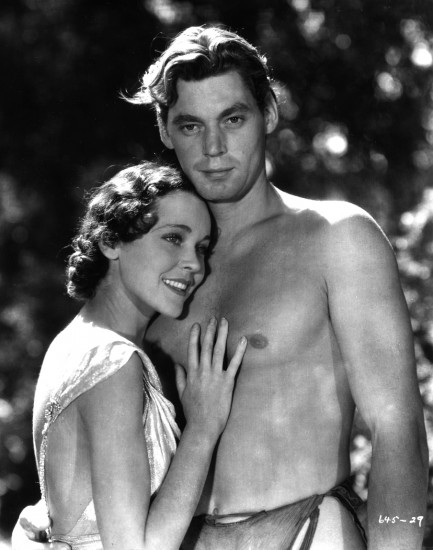 OooOOOoo... what's this here, Johnny? Is that a rock hard chest? I think it is. Who's got a rock hard chest? Johnny's got a rock hard chest... OooOOOoo... what's this here, Johnny? Is that a rock hard chest? I think it is. Who's got a rock hard chest? Johnny's got a rock hard chest...
 AHHHH-AHAHAHAH-AHAHAHAHA! Can Maureen and I get some goddamned lunch over here! AHHHH-AHAHAHAH-AHAHAHAHA! Can Maureen and I get some goddamned lunch over here!
 All dressed up and ready to conquer the world. 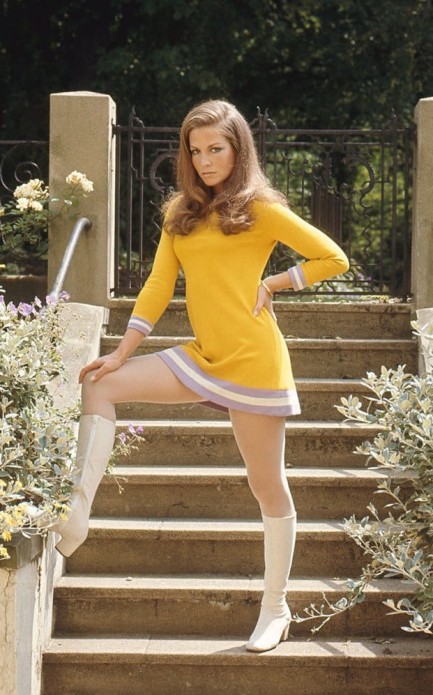
Canadian actress Alexandra Stewart has had a long and varied show business career with too many movie roles to count—at a glance, more than one hundred. She was born in Montreal and spoke French, so her first parts were in French language films such as L'eau à la bouche and Le bel. Most of her English speaking roles were in b-movies such as Emmanuelle 3, The Bride Wore Black, and Tarzan the Magnificent. But there were a few high profile movies too, such as In Praise of Older Women. The above photo didn't come with a date, but 1970 is a good bet.
 It's taken weeks to get here, but it will be worth it—in that fabled place I am told are stores that have shoes, boxer-briefs, bug repellant, and more. 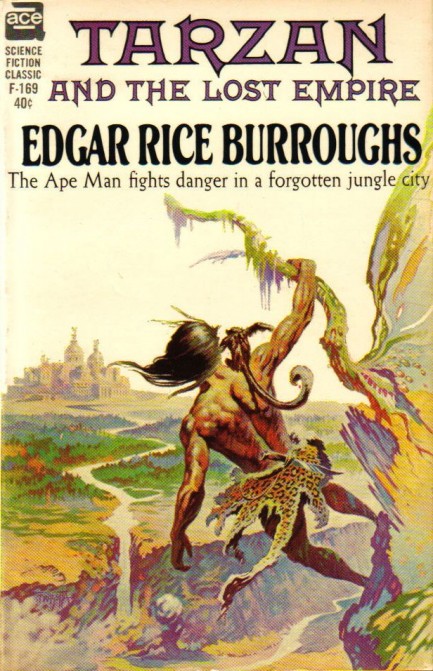
We shared a Robert Stanley cover for Edgar Rice Burroughs' wild adventure Tarzan and the Lost Kingdom a while back. We'd be doing a disservice if we didn't also share the brilliant Frank Frazetta art used for Ace Books on its 1962 re-issue. Frazetta is an artist about whom there is no debate. He was a genius.

|
 |

The headlines that mattered yesteryear.
2003—Hope Dies
Film legend Bob Hope dies of pneumonia two months after celebrating his 100th birthday. 1945—Churchill Given the Sack
In spite of admiring Winston Churchill as a great wartime leader, Britons elect
Clement Attlee the nation's new prime minister in a sweeping victory for the Labour Party over the Conservatives. 1952—Evita Peron Dies
Eva Duarte de Peron, aka Evita, wife of the president of the Argentine Republic, dies from cancer at age 33. Evita had brought the working classes into a position of political power never witnessed before, but was hated by the nation's powerful military class. She is lain to rest in Milan, Italy in a secret grave under a nun's name, but is eventually returned to Argentina for reburial beside her husband in 1974. 1943—Mussolini Calls It Quits
Italian dictator Benito Mussolini steps down as head of the armed forces and the government. It soon becomes clear that Il Duce did not relinquish power voluntarily, but was forced to resign after former Fascist colleagues turned against him. He is later installed by Germany as leader of the Italian Social Republic in the north of the country, but is killed by partisans in 1945.
|

|
|

It's easy. We have an uploader that makes it a snap. Use it to submit your art, text, header, and subhead. Your post can be funny, serious, or anything in between, as long as it's vintage pulp. You'll get a byline and experience the fleeting pride of free authorship. We'll edit your post for typos, but the rest is up to you. Click here to give us your best shot.

|
|




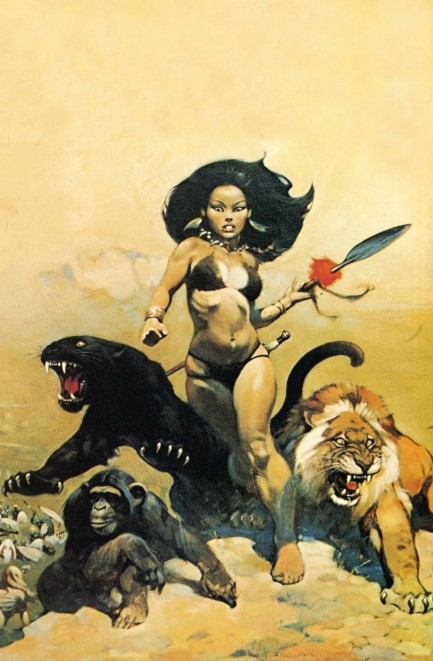





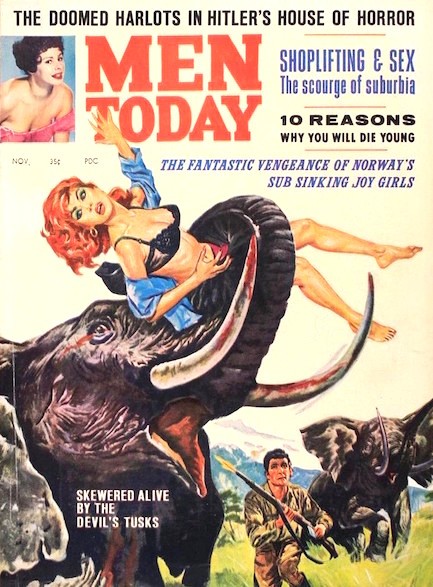
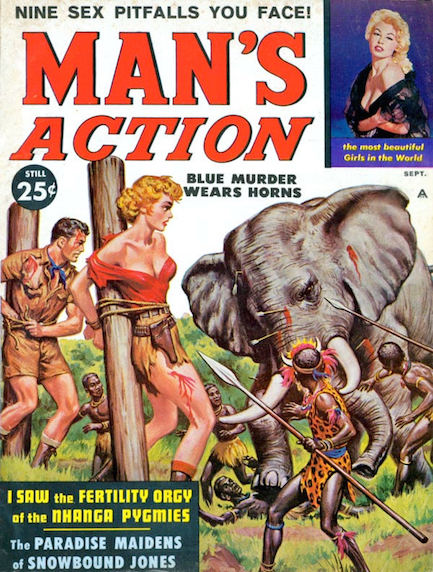
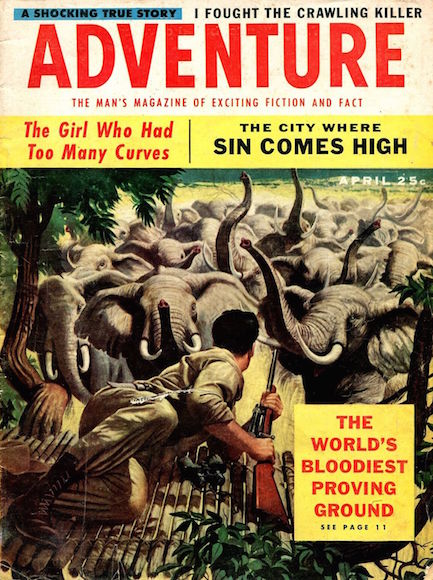
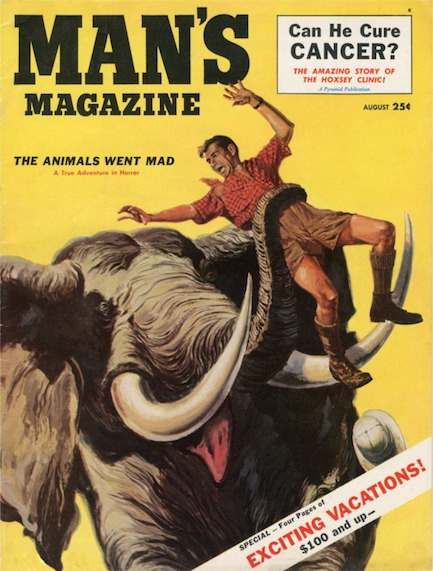
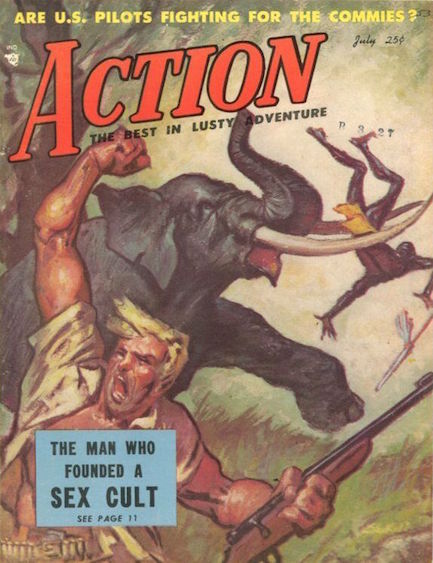

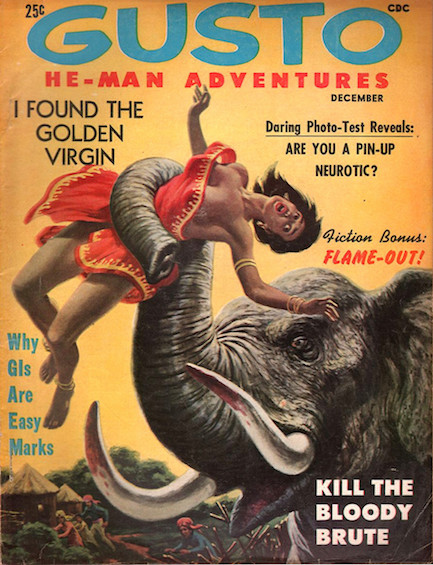
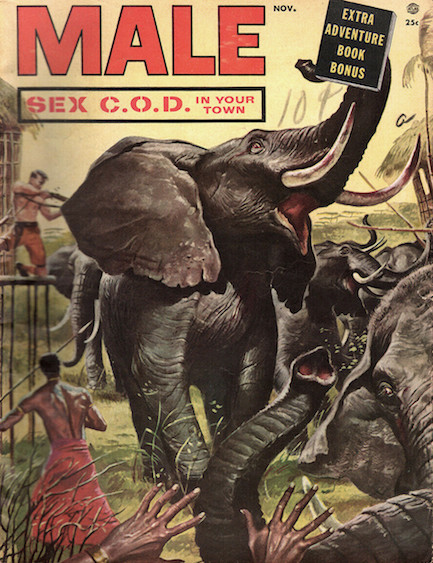
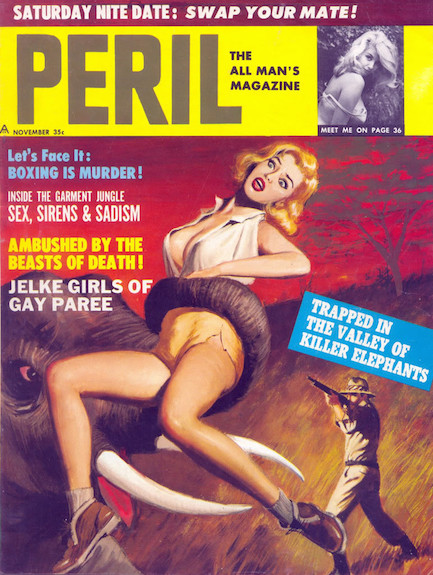
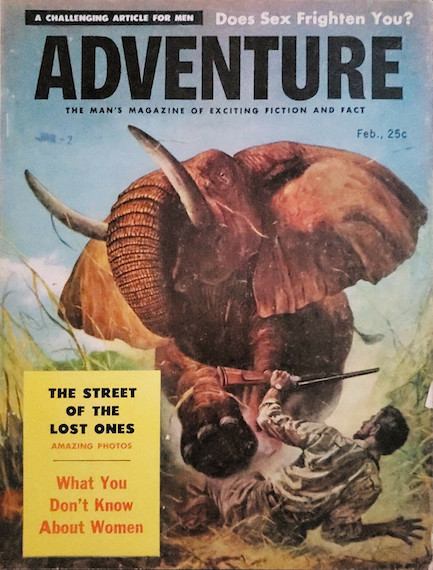
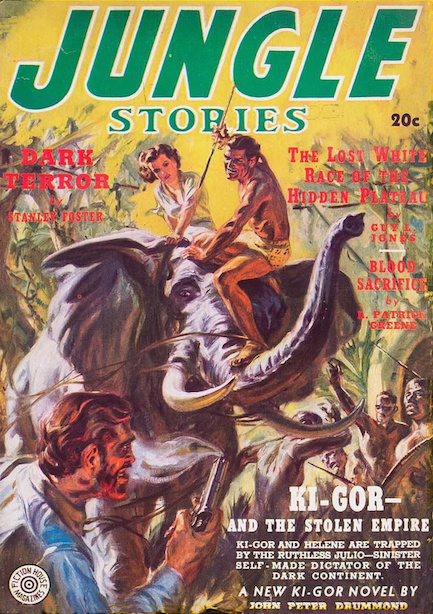
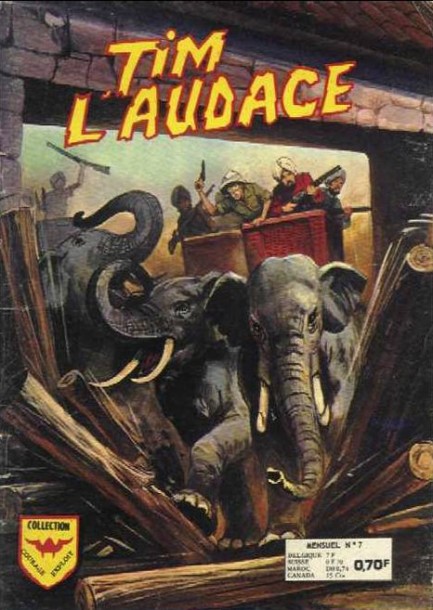
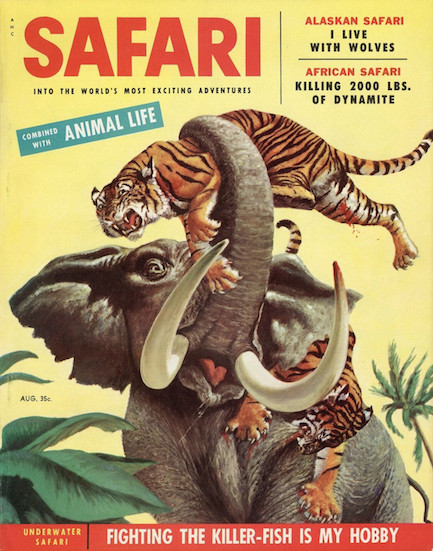
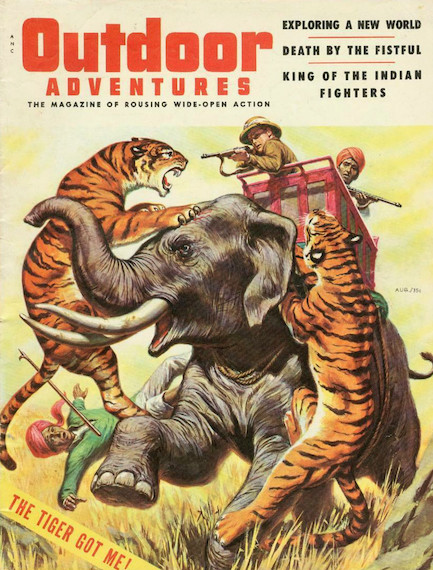
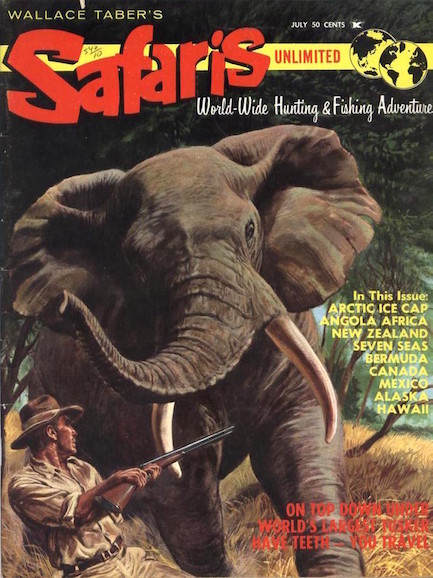
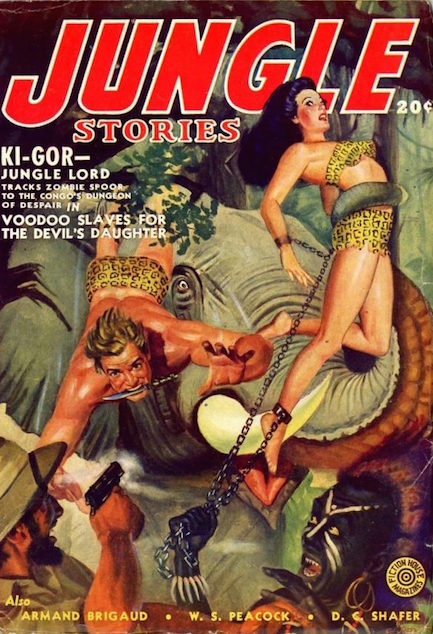
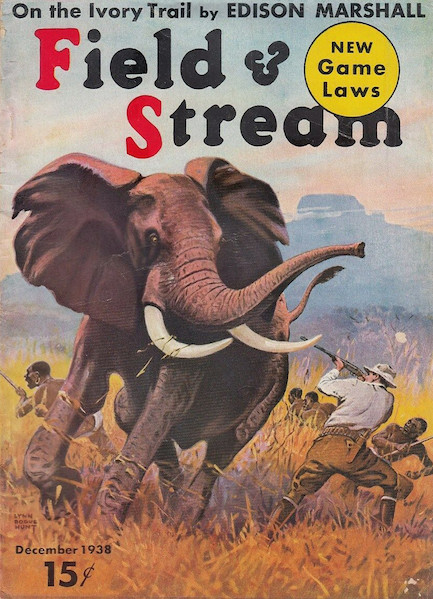
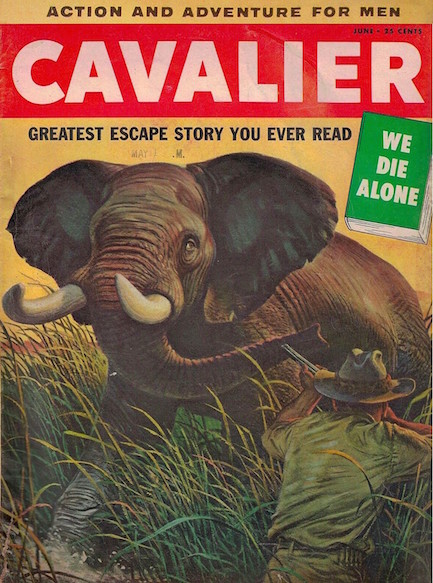
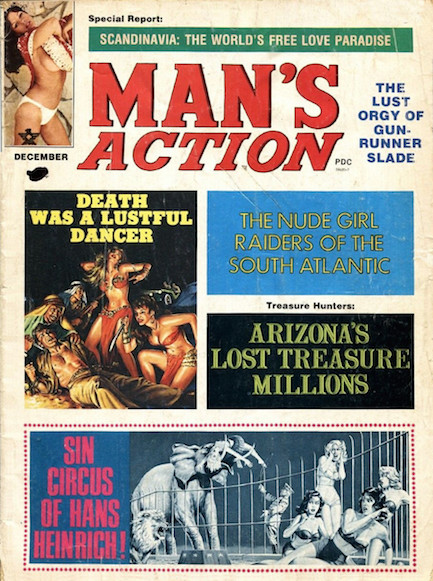
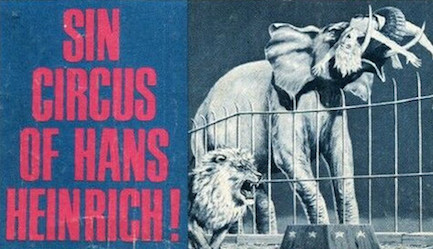
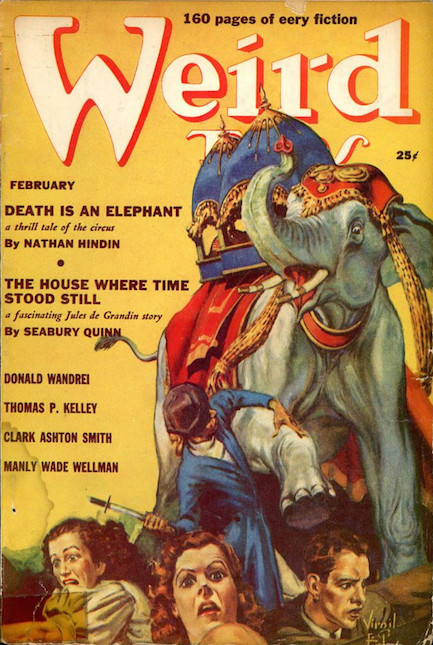
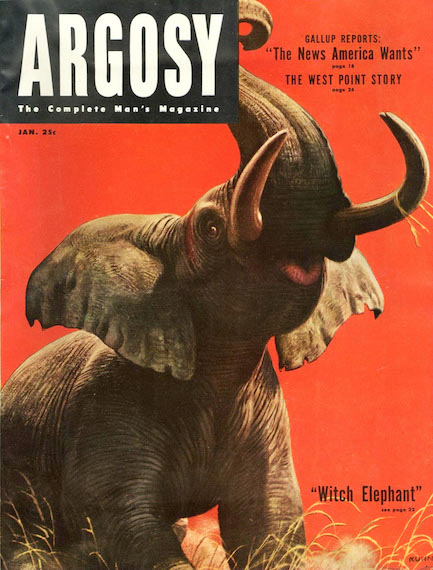
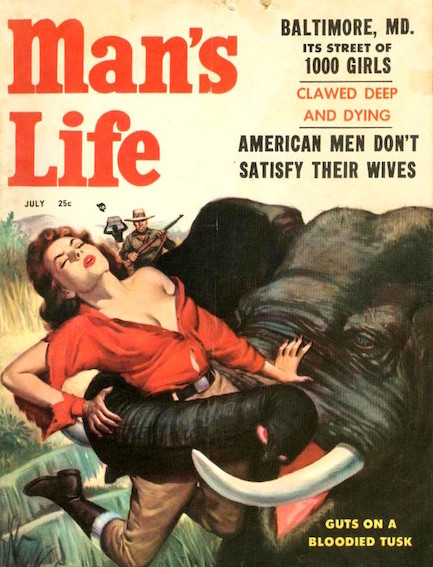
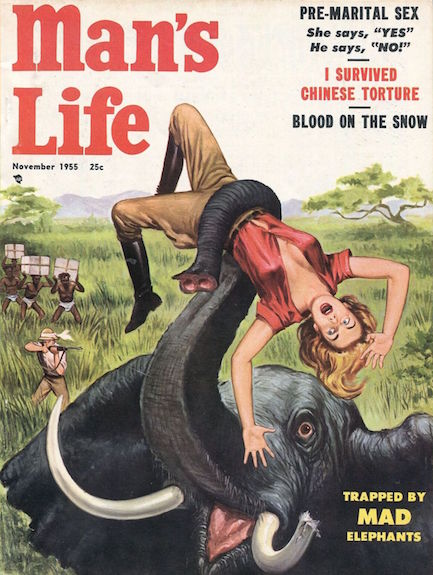
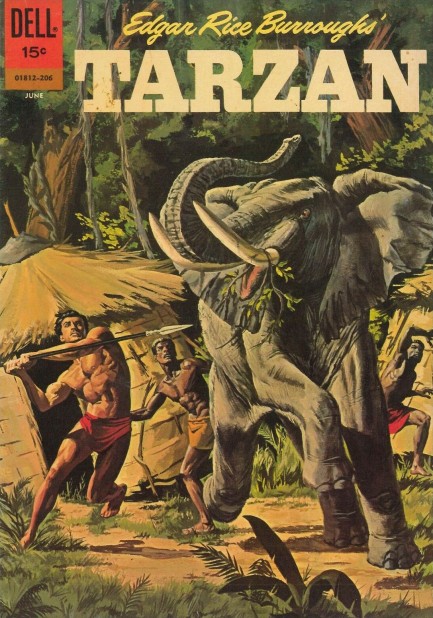
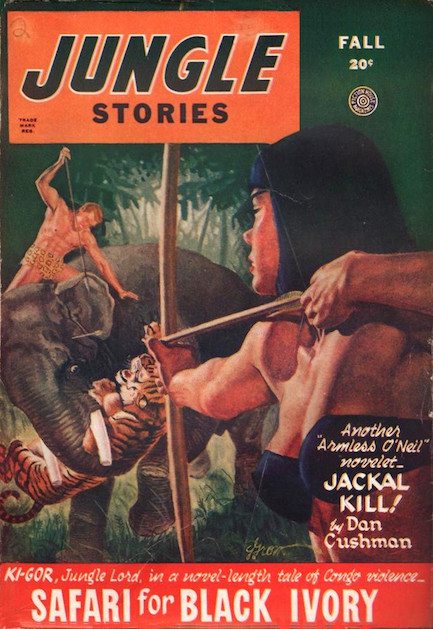
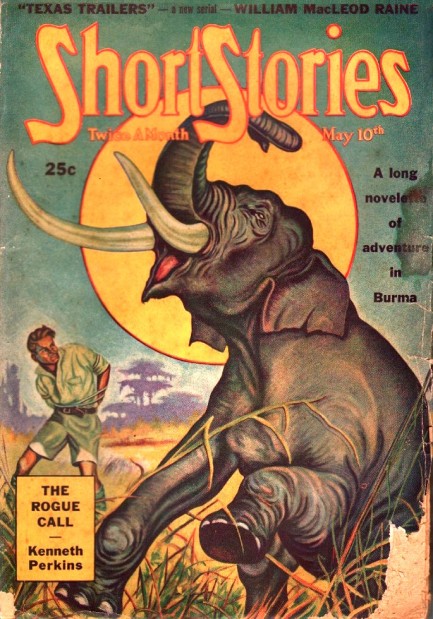
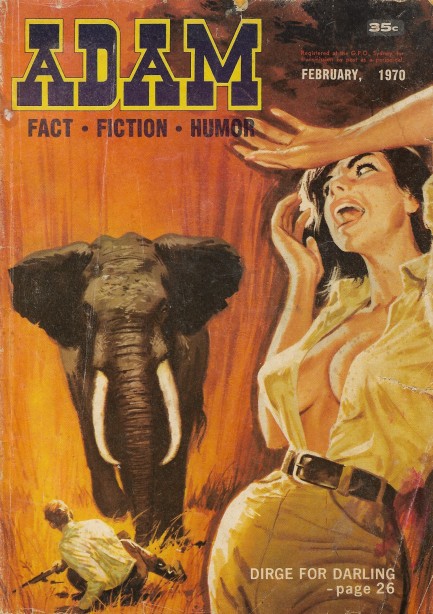
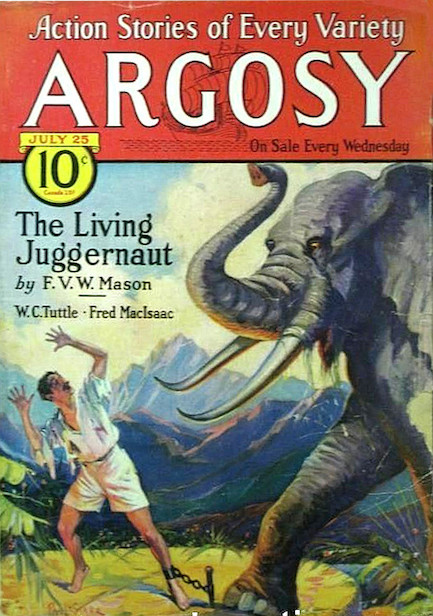
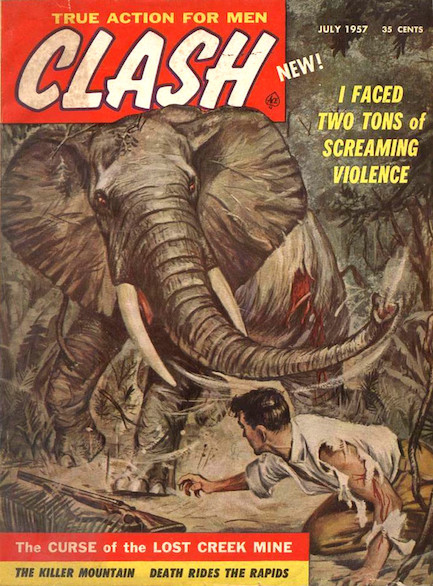
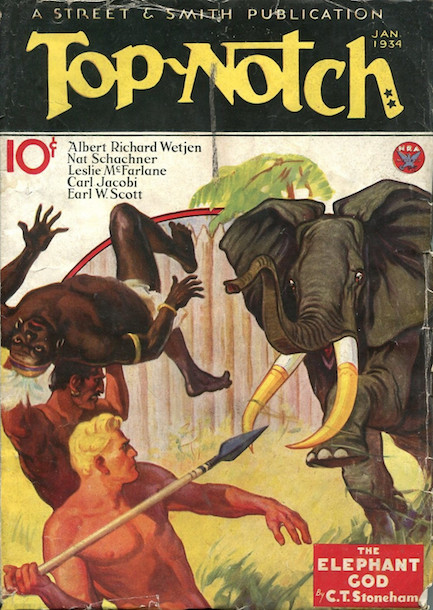
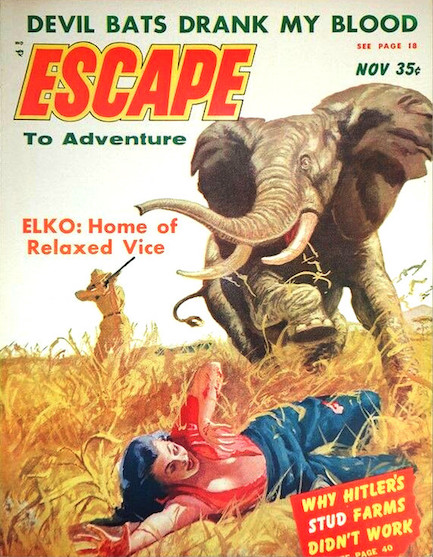
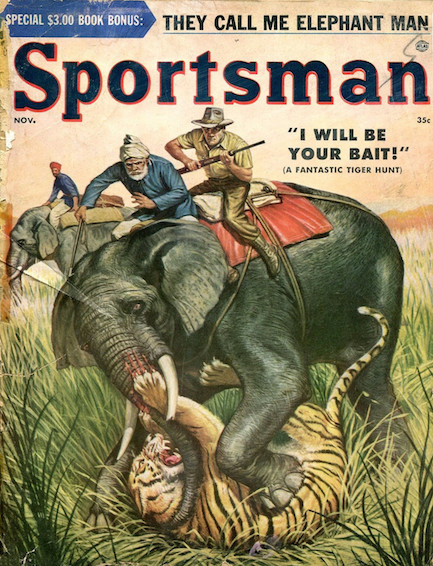
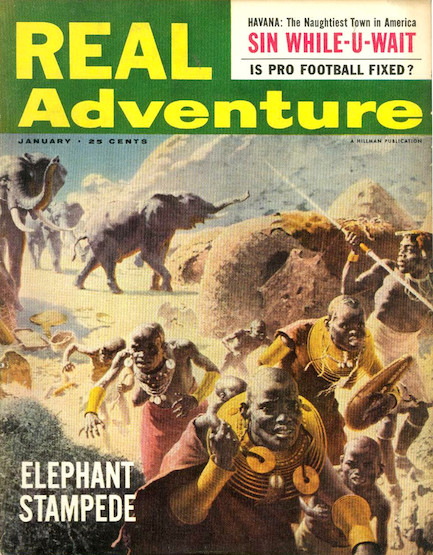
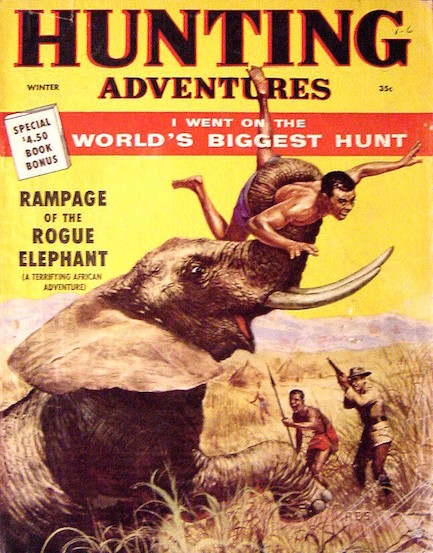
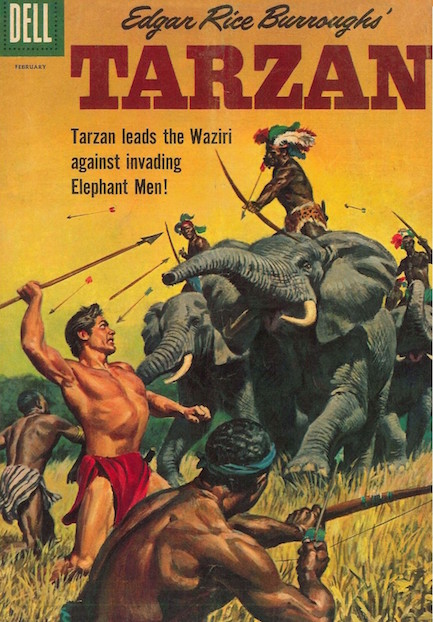
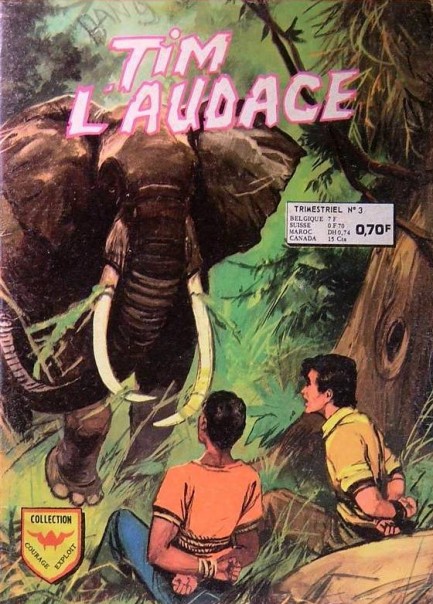
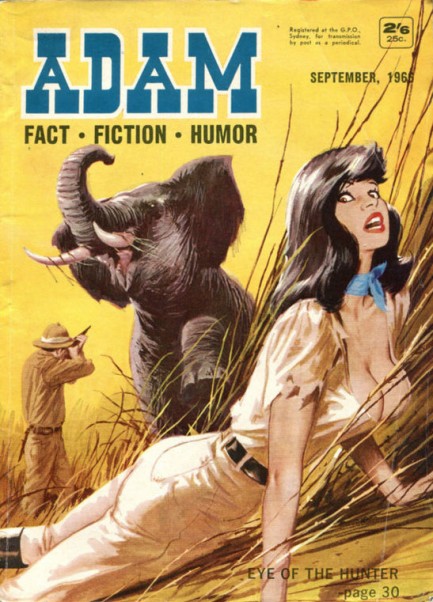


























 Needless to say, this flick is not flattering to Africans, African Americans, or African anyones. As for what the little person community thinks about fifty of their number covered in shoe polish, you'd have to ask a little person. We don't know any. But we seriously doubt they like it.
Needless to say, this flick is not flattering to Africans, African Americans, or African anyones. As for what the little person community thinks about fifty of their number covered in shoe polish, you'd have to ask a little person. We don't know any. But we seriously doubt they like it. Pick man up. Put man down. Pick man up. Let man sit on my head. I'm about to stomp this fool.
Pick man up. Put man down. Pick man up. Let man sit on my head. I'm about to stomp this fool. Tarzan invent shaving armpits. Tarzan smooth like eel.
Tarzan invent shaving armpits. Tarzan smooth like eel. Great pose, Johnny! Just great. And your nuts didn't fall out this time. Excellent!
Great pose, Johnny! Just great. And your nuts didn't fall out this time. Excellent! Jane feet funky. Also, Jane need pedicure.
Jane feet funky. Also, Jane need pedicure. OooOOOoo... what's this here, Johnny? Is that a rock hard chest? I think it is. Who's got a rock hard chest? Johnny's got a rock hard chest...
OooOOOoo... what's this here, Johnny? Is that a rock hard chest? I think it is. Who's got a rock hard chest? Johnny's got a rock hard chest... AHHHH-AHAHAHAH-AHAHAHAHA! Can Maureen and I get some goddamned lunch over here!
AHHHH-AHAHAHAH-AHAHAHAHA! Can Maureen and I get some goddamned lunch over here!